日本語バージョンはこちら
Established in 1929, Masuda Kiribako’s start was producing traditional handcrafted kiribako, boxes made from paulownia wood, for traditional Japanese objects such as Hakata dolls and Shamisen instruments. Afterwards Masuda Kiribako cultivated crafting methods for a wide range of containers, from tea ceremony instruments and foodstuffs, to general goods and catch-all containers and currently makes many different paulownia wood products. Masuda Kiribako is currently run by Hirofumi Fujii. Born in 1987, Hirofumi is a young leader who is also a third-generation craftsman, having continued the craft from his grandfather, the second-generation head of Masuda Kiribako. With Hirofumi, Masuda Kiribako is continuously developing unique crafting methods to create beautiful and charming containers.
| 1929 | Having apprenticed in Hiroshima, Hirofumi’s great-grandfather, Matsuyoshi Masuda, establishes “Matsuyoshi Masuda’s Kiribako Shop” in Fukuoka City, Fukuoka Prefecture |
| 1964 | Land is purchased in Koga City, Fukuoka and Masuda Kiribako transfers to a newly built factory |
| 1966 | “Masuda Kiribako Corporation” is established with Hirofumi’s grandfather, Hiroshi Masuda as the President |
| 1979 | A second factory is established in Shingu, within the Kasuya District of Fukuoka |
| 1990 | Masuda Kiribako establishes its own lumber yard |
| 2002 | Masuda Kiribako works are put on display in the Kyushu National Museum |
| 2012 | Hirofumi Fujii becomes President of Masuda Kiribako |
| 2013 | Collaborations with designers are started, and Masuda Kiribako launches production and development of designer products |
| 2013 | Masuda Kiribako moves to a newly built factory in Koga City, Fukuoka |
| 2017 | Masuda Kiribako’s paulownia wood rice bin is selected by the JIDA Design Museum Selection *JIDA: Japan Industrial Designers Association |
The History of Kiribako and other Containers in Japan
A box or container is something we simply cannot do without when preparing gifts or wanting to keep things safe. The Japanese view of a box is more than simply packing material. It is a mysterious existence tied to human emotion, within which we place our most precious things, entrust our dreams, and put that which we wish to treasure. As a piece of culture stretching back through ancient times, from Urashima Tarō to Shita-kiri Suzume, a box or container has been a focal point in not a few Japanese fairy tales.
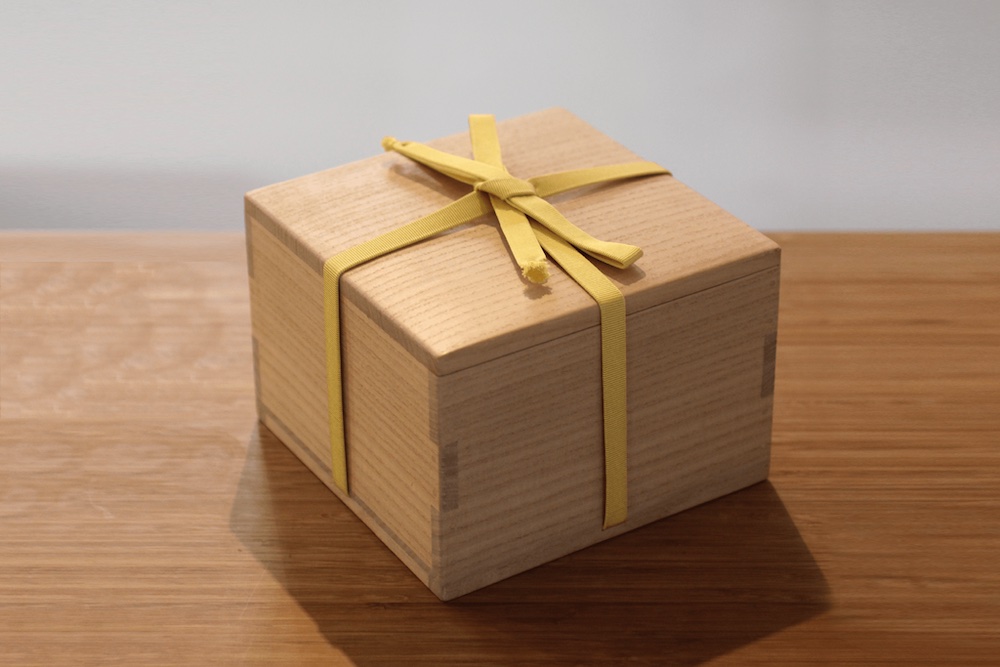
The culture of boxes originally had a religious and spiritual aspect, starting with storing Buddhist ritual implements from mainland China in the Nara Period. This led to cases for Buddhist scriptures and sutras, containers for monks’ stoles, and cases for prayer beads, all of which continue to this day.
From the Heian Period, boxes started to be valued and possessed by court nobility, used as inkstone cases and letter cases. In turn becoming more important than the inkstones, letters, or other contents they were preserving, boxes themselves became a luxury in and of themselves. It was at this time that they began to be used to house armors, swords, and other weapons.
By the end of the Muromachi Period, when tea houses were becoming prevalent, boxes made purely for tea and tea instruments first appeared on the scene. With preferences varying between tea makers and tea ceremony masters, boxes came to be made with specific characteristics relative to each kind of container. Tea boxes became as much a symbol of proof of its contents in addition to preserving an protecting its contents. Kiribako then became mainstream with the continued popularity and advancement of tea culture.
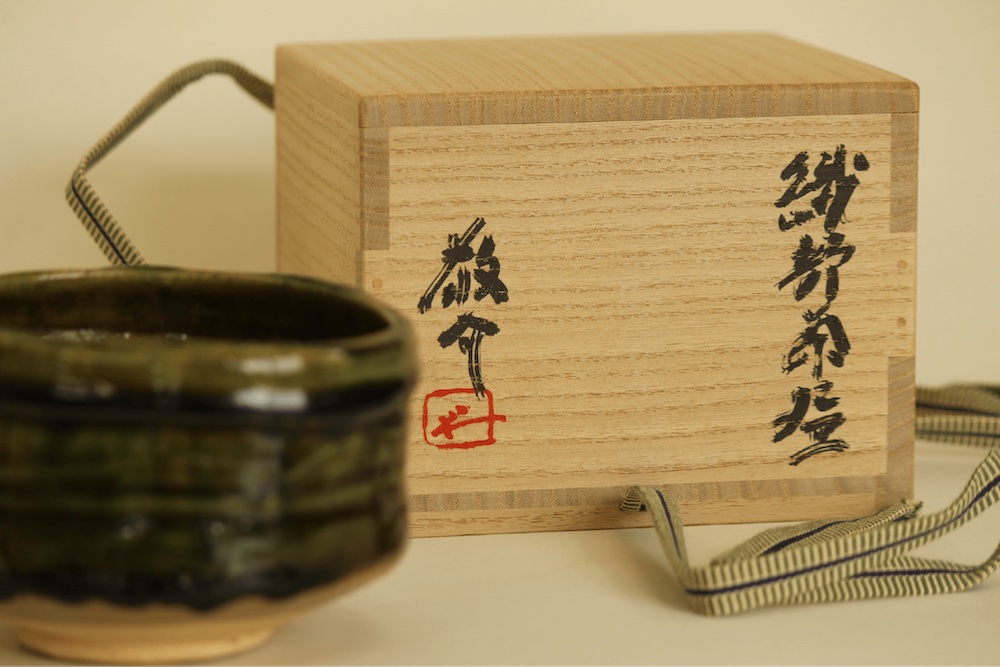
Currently, there exist boxes and containers with a myriad of purposes, including the tea ceremony, from containers to carefully keep objects such as Buddhist prayer instruments, furniture, decorations, flowers, or precious gems, to containers holding soft stuffs, such as clothing, food, or plants—even trash or litter containers for unneeded objects.
There are also various materials. Boxes are made in a range of materials such as cedar, rice husk, mulberry, also wood originally introduced from China including rosewood and ebony wood. But paulownia wood is deemed the most valued and treasured. This is because paulownia is the most appropriate wood for a box or container.
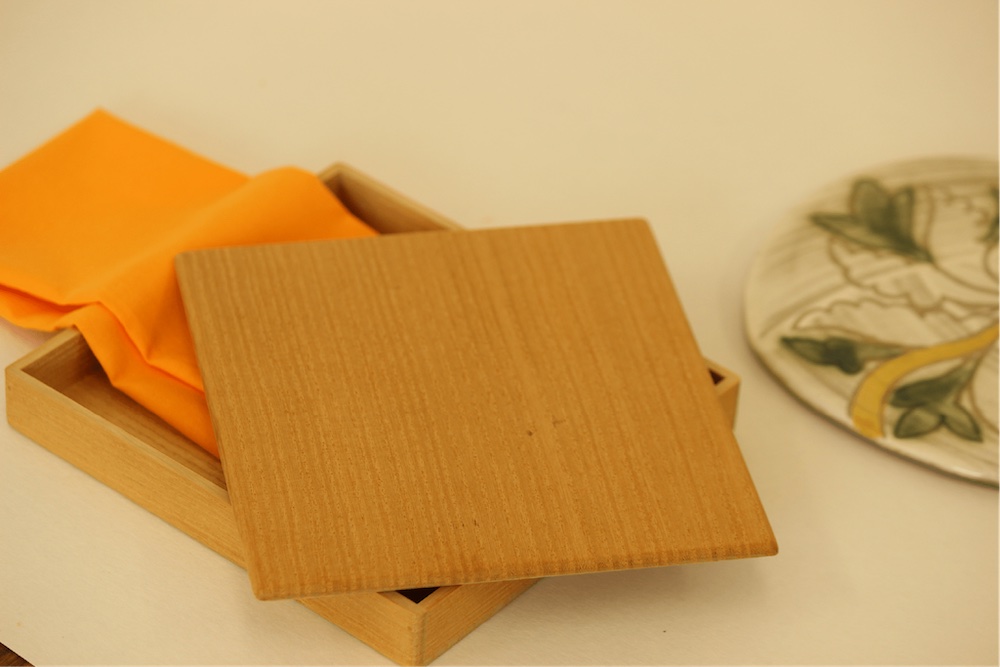
The reason paulownia is the most appropriate is, firstly, that it is light. From both a transportation and a protection viewpoint, being light is a big advantage. It is also pliable and flexible. Because it is a pliable material, it can absorb shocks from both the outside and inside and prevent damage. The box itself may be nicked or damaged, but dents may be fixed by slightly dampening the wood.
Paulownia also has an abundance of tannins, giving it anti-bug and anti-mold capabilities, a further asset to protecting its contents. The most valued asset of the tannins, however, is that they protect the wood against water and, when submersed, the wood swells and seals the container so that water cannot enter the contents. This was especially important within Japanese history, where water damage from fighting fires or heavy rains and flooding was a concern.
The wood originally introduced from China, that was used before paulownia became standard was both beautiful and sturdy, but weak to impact and dehydration and prone to cracking or damage with the variation of humidity and temperatures of Japan’s four seasons. Therefore, paulownia, which rarely warped or deformed, became the dominant wood used in construction.
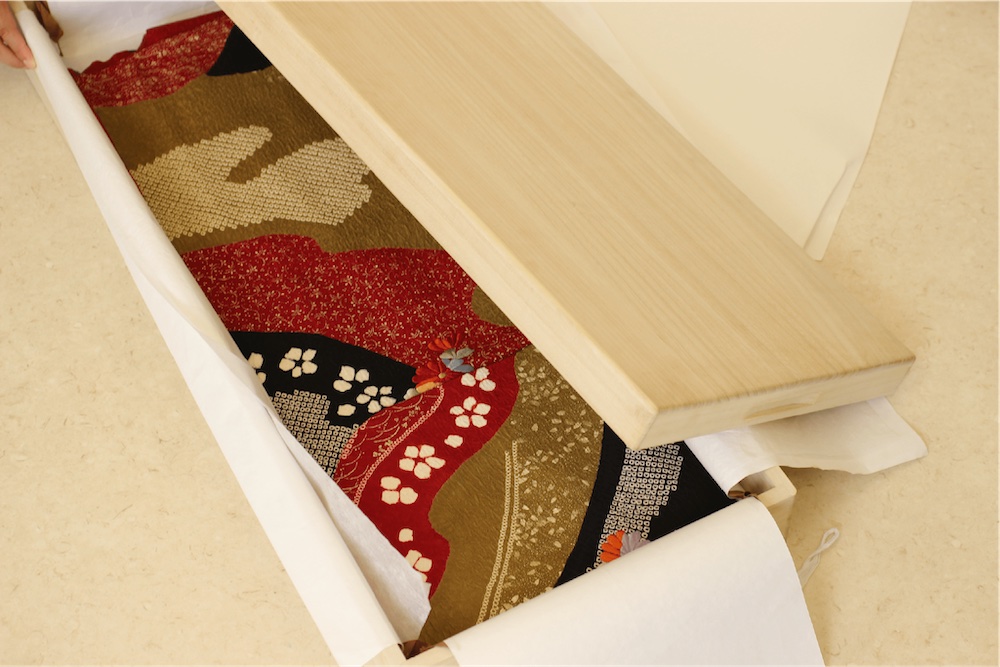
Masuda Kiribako’s Strengths
We can produce a wide range of boxes and containers, from unique luxury containers created by living national treasures and specialized museum exhibits to food and other product packaging and other large lot inexpensive designs.
Unique items, in which the utmost care is given to material and construction, are made one at a time by hand by kiribako craftsman. Line or robotic assembly, materials ranking, and other appropriate cost measures are also possible for large quantity production or for orders in which cost must be kept to a minimum.
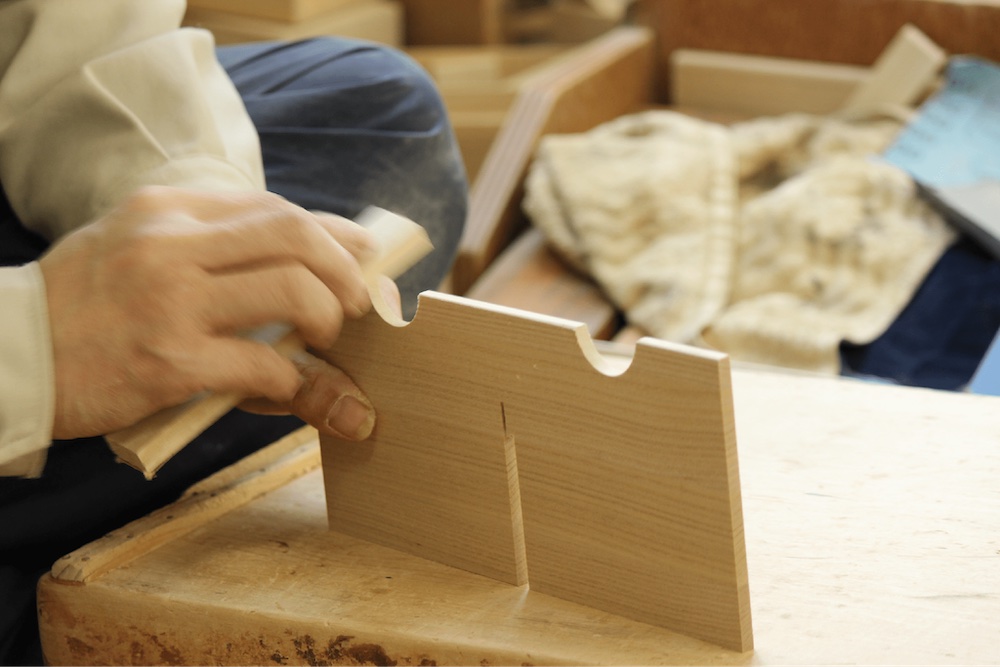
With 90 years of history, we have a wide customer base over many industries both within and outside Japan. We can draw upon this experience to provide examples and proposals for a wide range of projects.
Masuda Kiribako started with constructing cases for Hakata dolls, Hakata’s traditional craft arts. From there, we were contracted to produce cases for a variety of industries and projects, such as porcelain dishware cases, tea containers, traditional sweets packaging, and a special paulownia dresser for Okawa furniture.
From 2016 we have begun to experimentally develop products for export overseas mainly to the North American market.
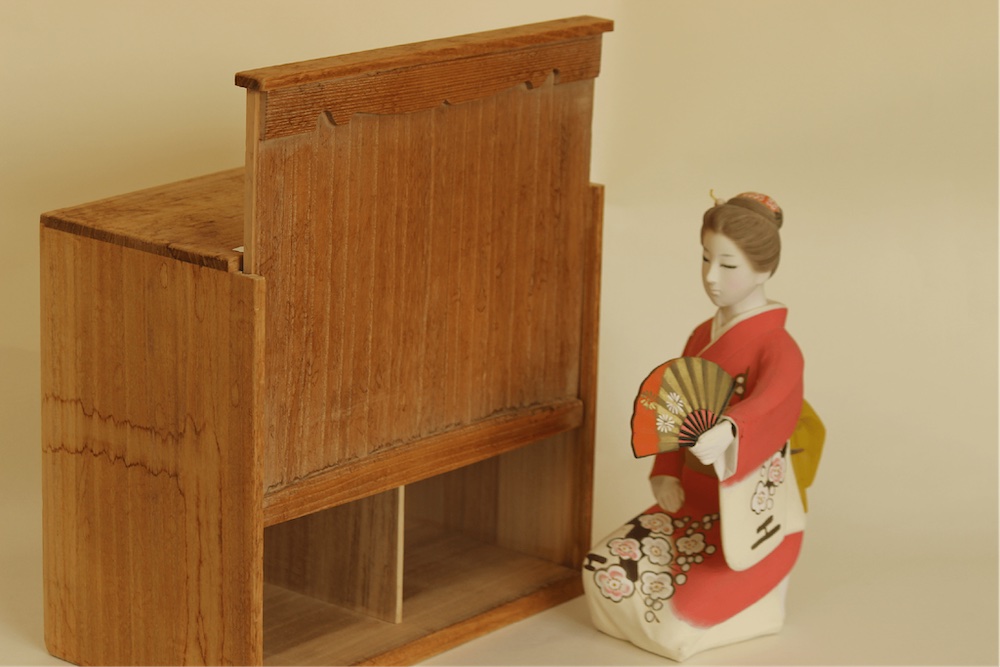
We have a staff of over 50 that works daily to construct kiribako. With specialty manufacturing line construction and automation covering the more dangerous manufacturing processes, we can produce both large and small order quantities within a short term.
With delineation between marketing/sales and craftsman roles, work efficiency is compartmentalized. Our sales and marketing team is especially adept at quickly producing product proposals and estimates and, because we have individual representatives across the country ready to respond, we can talk in detail with any potential customers.
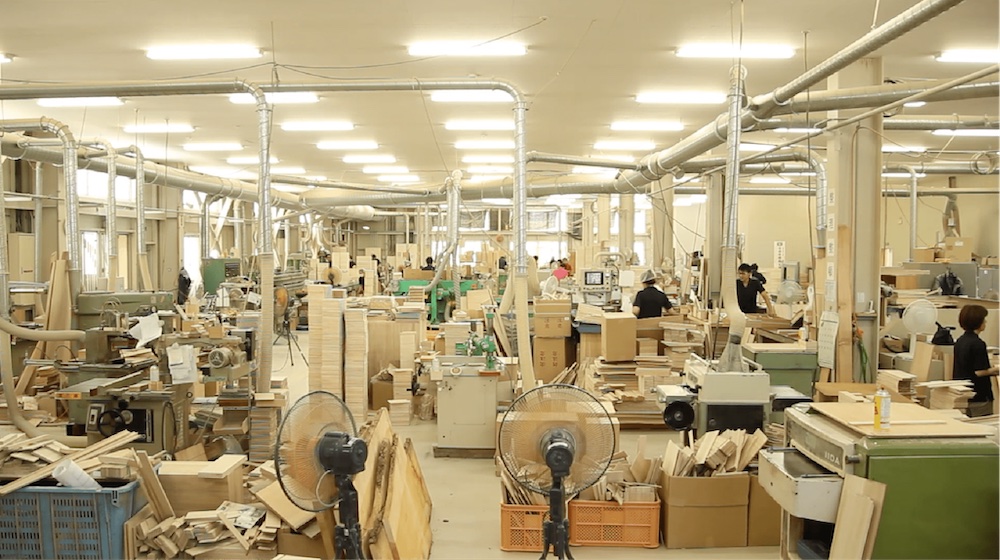
We are working to develop original paulownia products beyond simply paulownia packaging products.
We are developing kiribako and paulownia products with a unique daily charm through an alliance with Mr. Kojima of the local design studio trythink. In addition, we continuously expand our box and container production techniques and technology to produce new container styles with combinations of different raw materials. These new designs have received multiple awards and have been featured in many exhibitions.
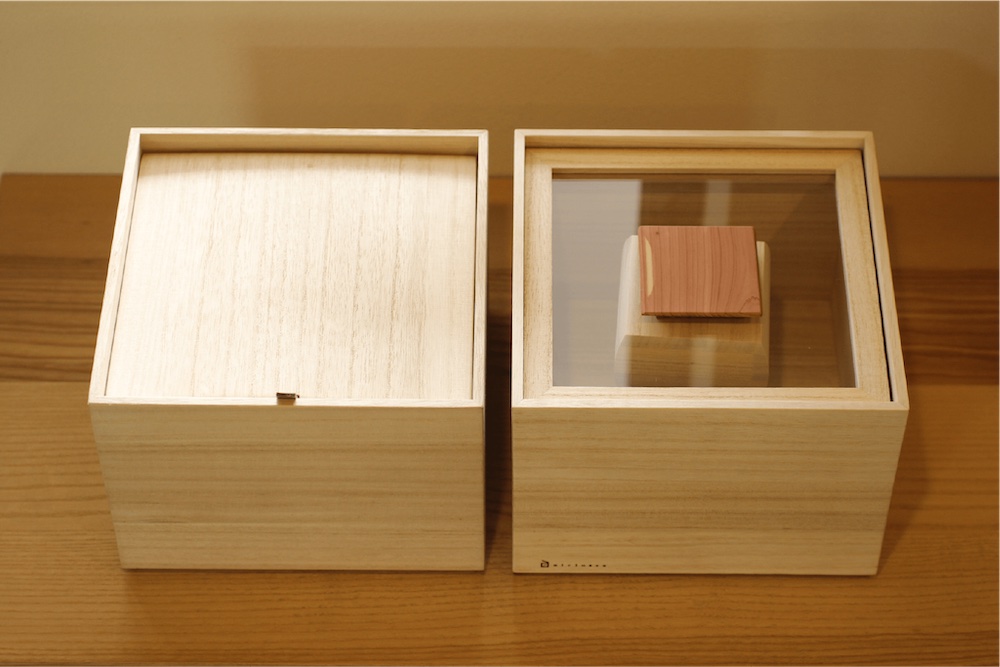
We maintain a facility to manage our paulownia lumber and apply a traditional and natural paulownia wood blanching technique called akunuki.
[ About akunuki and paulownia wood ]
- Splitting the natural paulownia, the wood is dried in the sun and exposed to the wind and rain for three years, naturally removing the lye within the wood.
- The paulownia is then re-cut into easier to handle sizes and the process is continued for another two years.
- Several more years of setting (a wood pounding technique referred to as kigoroshi) produces a beautiful white paulownia wood perfect for constructing containers and boxes with nearly no deformation.

Masuda’s Mission
At Masuda Kiribako, we are advancing our research daily to give our customers the most options for types of paulownia and assembly options to fit the specific use of each box. We continuously develop and unique and independent manufacturing methods and proposals to produce beautiful and attractive boxes.
We continue to strive and manufacture so that the great tradition of kiribako artisanship of Fukuoka will be a positive force in your daily lives.


